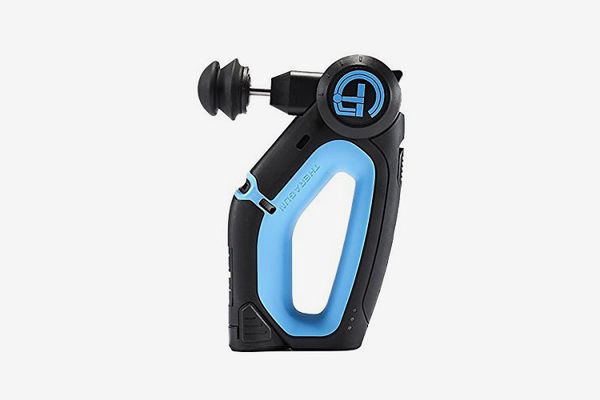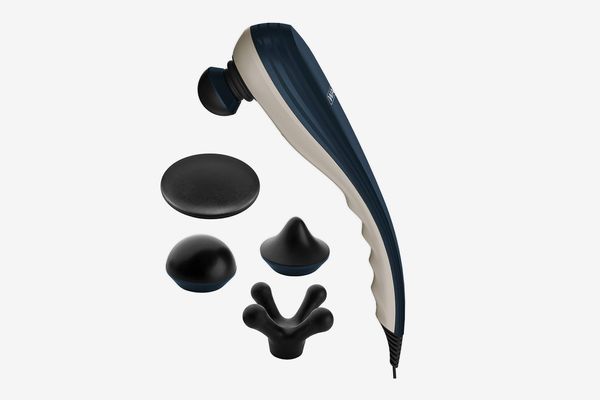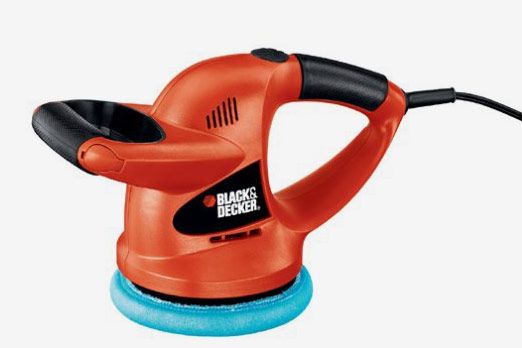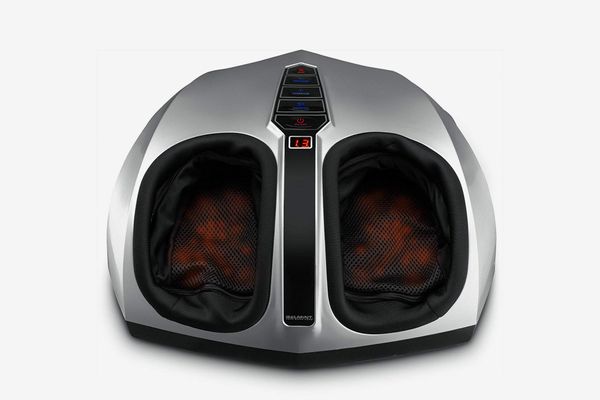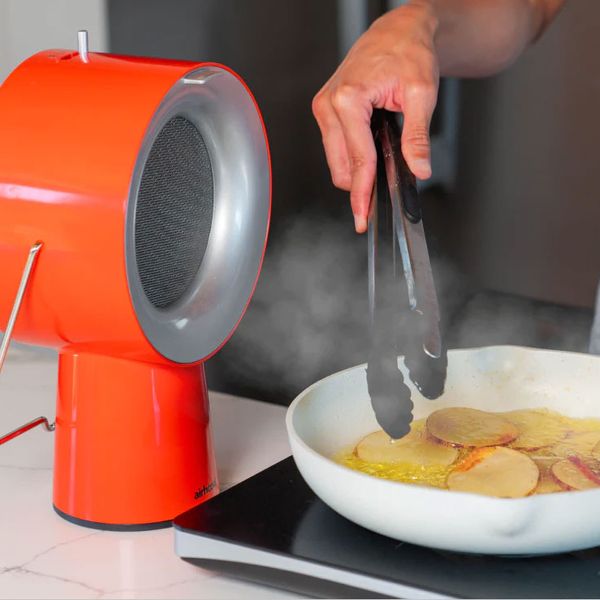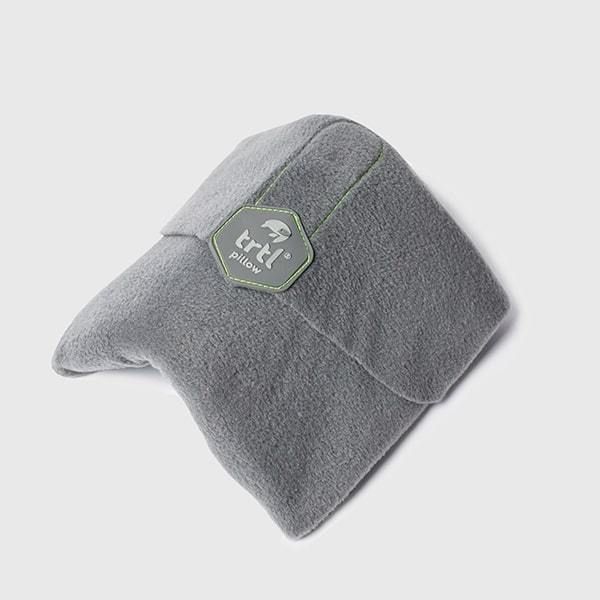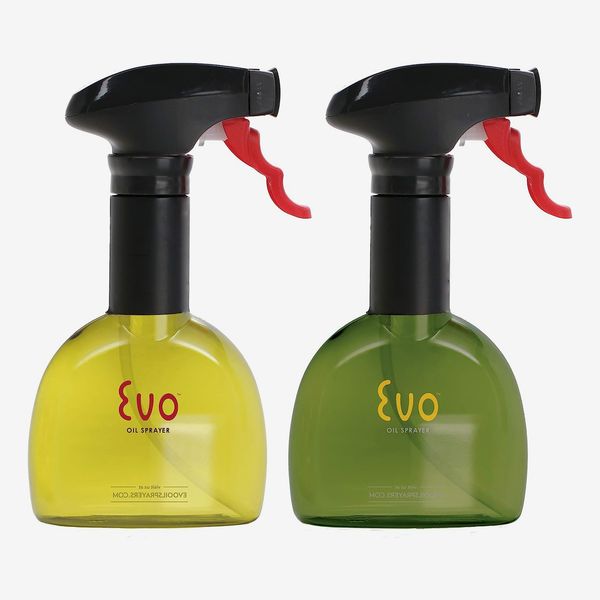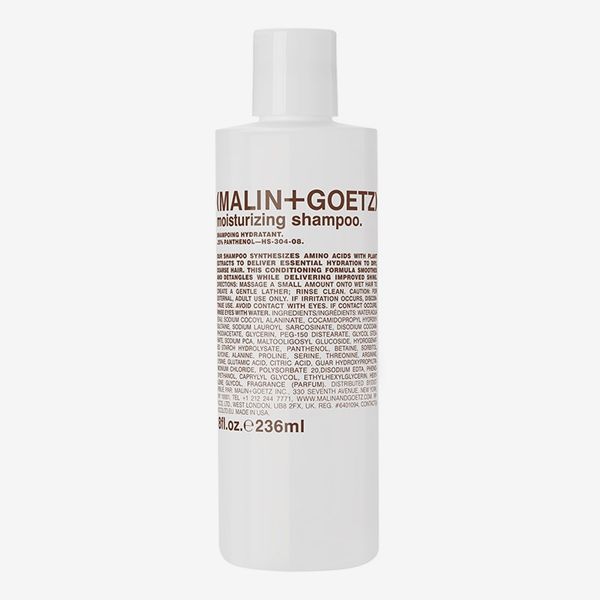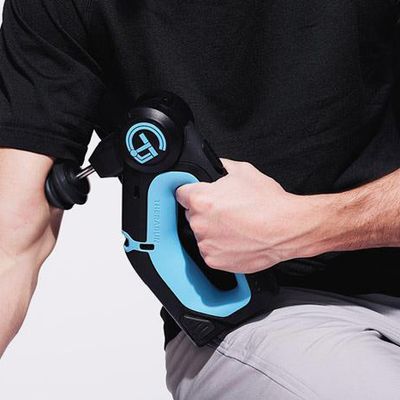
One of my favorite ways to relax at the end of a long day is to watch YouTube video compilations of chiropractors cracking backs and massaging out knots. It makes me feel like I’m receiving the massage by osmosis, melting into my mattress as the doctor tells the patient to relax and breathe before releasing a satisfying pop. (I believe this is what the kids call ASMR.) My favorite moments, though, are when the doctor busts out the big guns — and by that, I mean the deep-massage tools, which look and sound like drills, but seem incredibly satisfying to those being treated with them.
It was during one of these late-night hunts for satisfying chiropractic content that I first came across the TheraGun, and I immediately became obsessed. Unlike other massage devices that just seem to shake someone’s skin, this one is so powerful that it makes even the most ripped triceps wave and steeliest pecs ripple, like someone threw a pebble in a still lake. The slow-motion videos of the TheraGun in action are especially dramatic, since you can see the individual waves form as the rubber mallet smacks down on the skin. Professional athletes have been spotted with the percussive massage-therapy device, most notably Kyrie Irving, who used it during an NBA Finals game in 2017. It also costs nearly $600.
But just what does the TheraGun do that other massagers that are a fraction of the price don’t? “This is going to help you increase your range of motion, at the same time decreasing your pain,” says Dr. Jason S. Wersland, a chiropractor and creator of the TheraGun, “and its efficiency is higher because of the frequency and amplitude.” The high amplitude is what, in his opinion, makes the TheraGun different than other percussive devices on the market, like the TimTam or Hypervolt. In fact, Dr. Wersland adds that while developing the device, he realized, somewhat counterintuitively, that “the more violently it percussed on my body, the less pain I felt.”
As mesmerizing as the celebrity appeal and slo-mo videos are, though, there’s scant information available about the device’s real efficacy. Ultimately, “all it is is just a more sophisticated massage device,” says Dr. Charles Kim, a pain-management specialist and assistant professor at NYU Langone Health’s Rusk Rehabilitation. And though there is some truth that different frequencies may have different effects on how muscles heal and relax, there’s no compelling research at the moment saying that one frequency of vibration or amplitude, like that of the TheraGun, is better or more efficient than another. “Studies have shown when you use different frequencies or stimulation, it can impart different types of effects,” says Dr. Kim. “But once again, this device and these claims have not been tested.”
That doesn’t mean a device like the TheraGun won’t yield positive results — and there’s plenty of anecdotal evidence that indicates it helps athletes recover. For Los Angeles–based photographer Mark Hunter, a.k.a. the Cobrasnake, and founder of the Cobra Fitness Club, the TheraGun has become a must-have workout accessory. (He is also a big fan of the slow-motion TheraGun video, which often appears on his Instagram Stories.) “It’s helped me stay healthy and active, and I use it multiple times a day, always before and after working out. It keeps me going longer and stronger,” without trips to a massage therapist.
There’s always a chance that this particular percussive massage device might work better for some than for others, in the same way a Swedish massage might help you more than a Thai one. But if you’re a generally healthy, physically active person — without any medical conditions like deep-vein thrombosis — who works out a lot, wants help mitigating muscle soreness, and has a spare $599, then there’s little risk in trying the TheraGun. However, you also might see similar, muscle-relaxing results with a different, less expensive massage device. “If people are contemplating a massage machine, you don’t necessarily have to jump to the biggest, most expensive unit to achieve the results,” advises Dr. Kim. “For some people, just using a rolling pin might help, and a rolling pin is certainly much less expensive than this. I don’t want to upset the makers, but it’s like, is it a Rolex or is it a Timex? Both tell time, but the cost is the difference.”
Or, if you’re not big on going to the gym at all, you could always settle for watching the ripples of muscle flapping under the mighty hammer of the TheraGun. That pleasure is still totally free.
If you want to give percussive massage therapy a shot without dropping hundreds of dollars, this deep-tissue massager from Wahl has nearly 2,000 reviews on Amazon.
Writer Maggie Coughlan tipped us off to this Black & Decker buffer that she uses as a massage device.
If you’re mostly focused on massaging your feet, this well-reviewed foot massager with a heat function is a perennial Strategist favorite.
The Strategist is designed to surface the most useful, expert recommendations for things to buy across the vast e-commerce landscape. Some of our latest conquests include the best women’s jeans, rolling luggage, pillows for side sleepers, ultra-flattering pants, and bath towels. We update links when possible, but note that deals can expire and all prices are subject to change.
Every editorial product is independently selected. If you buy something through our links, New York may earn an affiliate commission.

